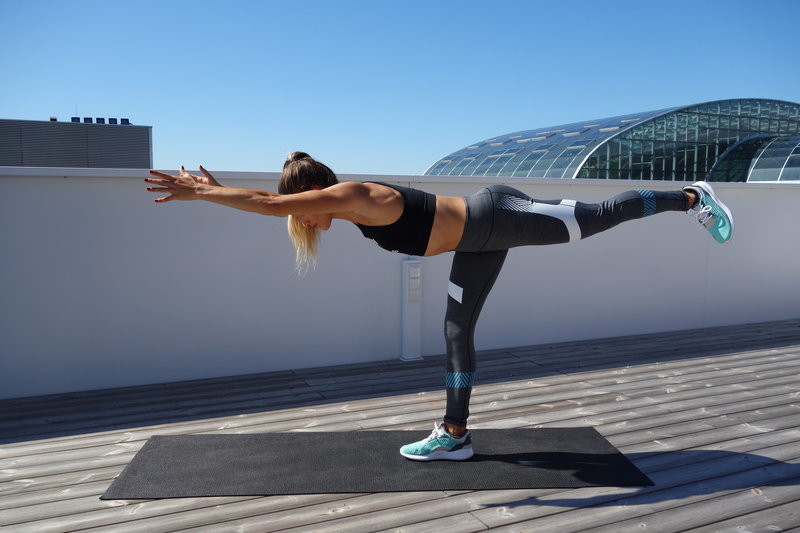Running News Daily
Running News Daily is edited by Bob Anderson. Send your news items to bob@mybestruns.com Advertising opportunities available. Train the Kenyan Way at KATA Kenya and Portugal owned and operated by Bob Anderson. Be sure to catch our movie A Long Run the movie KATA Running Camps and KATA Potato Farms - 31 now open in Kenya! https://kata.ke/
Index to Daily Posts · Sign Up For Updates · Run The World Feed
Lower Back Pain, Why It Happens To Runners And How To Get Rid Of
When you go out for a long hard run, you expect to have tired legs, burning lungs, and general fatigue; what you don’t often expect to have is back pain. But surprisingly enough, back pain amongst runners is a very common thing, particularly in less experienced runners, or those with improper running technique or weak back muscles (which is most of us!). And if you’ve ever experienced back pain after (or even during) a run, you know just how annoying and painful it can be.
WHY DO WE GET BACK PAIN WHILE RUNNING, ANYWAY?
If you think about it, your back has an enormous role to play when it comes to running. When you run, you have to hold your body vertical — sometimes for a very long time — and your back has to work with the rest of your body to keep you moving and upright.

When it comes to your lower back, it’s all about core strength, and the coordination of your legs. When you run, your core muscles have to work hard to support your spine and lower back, while your core, hips, glutes, and hamstrings have to join forces to keep you stable. When one muscle or a group of muscles becomes fatigued, your lower back has to work harder to keep you upright and on your feet, which can cause pain, or worst case scenario — injury.
And if you’re experiencing more pain in your upper back instead of your lower back, it’s often as a result of your head position. Yep, you heard right. A lot of upper back pain is a result of having your head leading your body — jutting out in front of your body — causing unnecessary tension and stress on the upper back. Another likely culprit of upper back pain is your arms. If you’re holding your arms up too tight or maybe even too high, or tensing your shoulders up towards your ears (which is common when the body is fatigued), it can cause strain on your upper back.

WHAT CAN YOU DO TO PREVENT BACK PAIN WHILE RUNNING?
To prevent back pain while running, the best thing you can do is to work on strength and flexibility. You need a strong core to support your spinal muscles, and strong, flexible legs (glutes, hips, quads, and hamstrings) to hold the body upright and stable while you run.
This is why cross-training — incorporating strengthening movements into your running routine — is so important! If you want to run for a long time, you have to protect your body by strengthening the muscles that keep your body moving and upright — it’s as simple as that.
WHAT KINDS OF EXERCISES CAN YOU DO TO PREVENT BACK PAIN?
Thankfully, there are ways to lessen the stress on your back and make running a little more comfortable — well, unless you ask your legs, of course.
If you’re looking to prevent back pain while running, try the following 3 strengthening exercises:
1. BALL PIKES.- One of my favorite core strengthening exercises is ball pikes — this exercise not only challenges your core and back but also helps to increase hip mobility and flexibility. To begin, rest your shins on top of an exercise ball and place your hands on the floor, slightly more than shoulder width apart, with your arms straight. Roll the ball in towards your chest, while lifting your hips as high as you can, without bending your knees, and then pause at the top and roll it back slowly. Do as many as you can, between 10-20, for 3 rounds.
2. WARRIOR THREE HAMSTRING EXTENSIONS WITH LEG LIFTS.- In my opinion, if you wanted to do one move for the rest of your life that would help strengthen your glutes and hamstrings, improve hip flexibility, strengthen your core, and also help to improve your balance and stability, this is the move you should be doing. To begin, stand with feet about hips width apart. Bring one knee in towards your chest, and if possible, extend the leg out in front of you. Reach your arms up overhead, palms facing inward (you can hold onto a medicine ball for a more advanced movement). Pause. Then begin to move the leg behind you, bending forward from the hips until your body forms a “T” shape. Repeat on one side 10 times and then switch legs. Try to do this for 3 rounds.
3. BICYCLE CRUNCHES.- Having a strong core and flexible hips are both essential when it comes to running without back pain, which is why I love bicycle crunches. They work to strengthen your core while also challenging your hip flexibility and mobility. To begin, lie on your back with your shins parallel to the ceiling. Begin to draw one leg out in front of you, and touch the opposite elbow to the opposite knee. And then switch, pausing each time with elbow to knee and heel hovering off of the ground. Do 20 bicycle crunches (10 each side) for 3 rounds.
Running is a high-impact activity and can cause repetitive stress on the body, especially the lower back. Cross-training with these 3 moves combined with stretching the calves, hamstrings, and back body is a sure way to prevent back pain before it starts.
by Adidas Runtastic Team
Login to leave a comment




